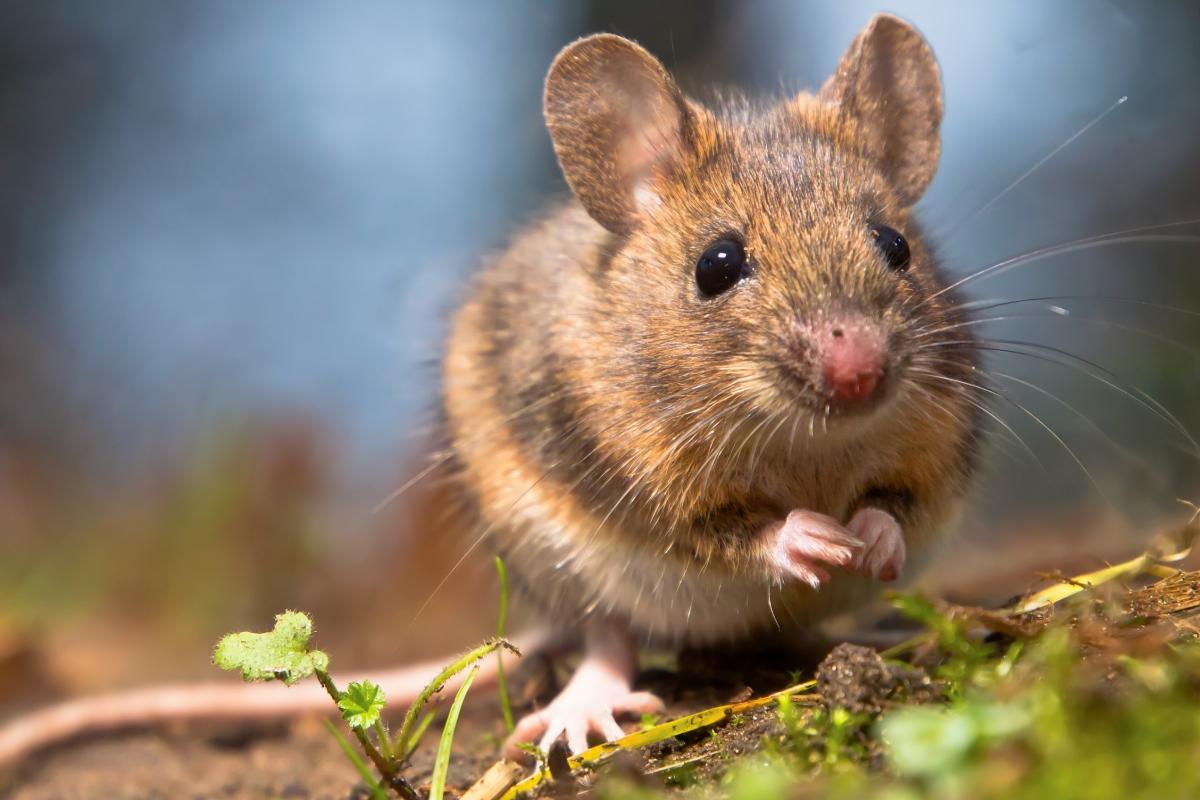
The importance of deadwood for wildlife
At the Heart of England Forest, we are creating and conserving a mosaic of habitats including mature and ancient woodland, grassland, wetlands, and woodland rides to benefit wildlife, people, and the environment. But did you know that within those habitats it is important to have a variety of niche microhabitats, providing homes for wildlife living there?
Why are microhabitats important?
Without a mixture of microhabitats, biodiversity is lowered as many species are unable to thrive. Thousands of invertebrates rely on deadwood, which in turn provide food for a whole host of other animals. There are many types of deadwood within the Forest, providing homes for a wide array of wildlife.
Dead hedgerows
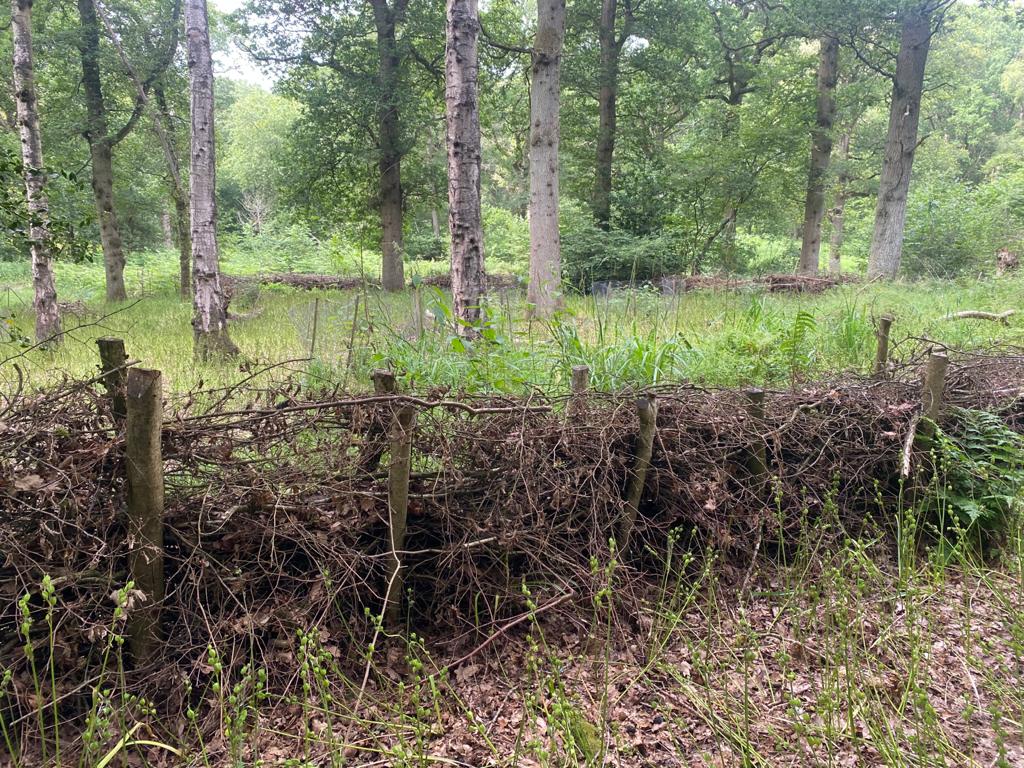
Dead hedgerows are created using piles of branches and twigs. They can be piled roughly between, or woven in and out of, vertical branches used as posts. Dead hedges, as the name suggests, are arranged to form a hedgerow shape. These not only provide a niche habitat but can also be used as a natural barrier.
They provide excellent shelter for many species of bird and small mammal. Over time the dead hedge will slowly and naturally rot away providing habitat for specialist invertebrates and fungi.
Stacks/piles
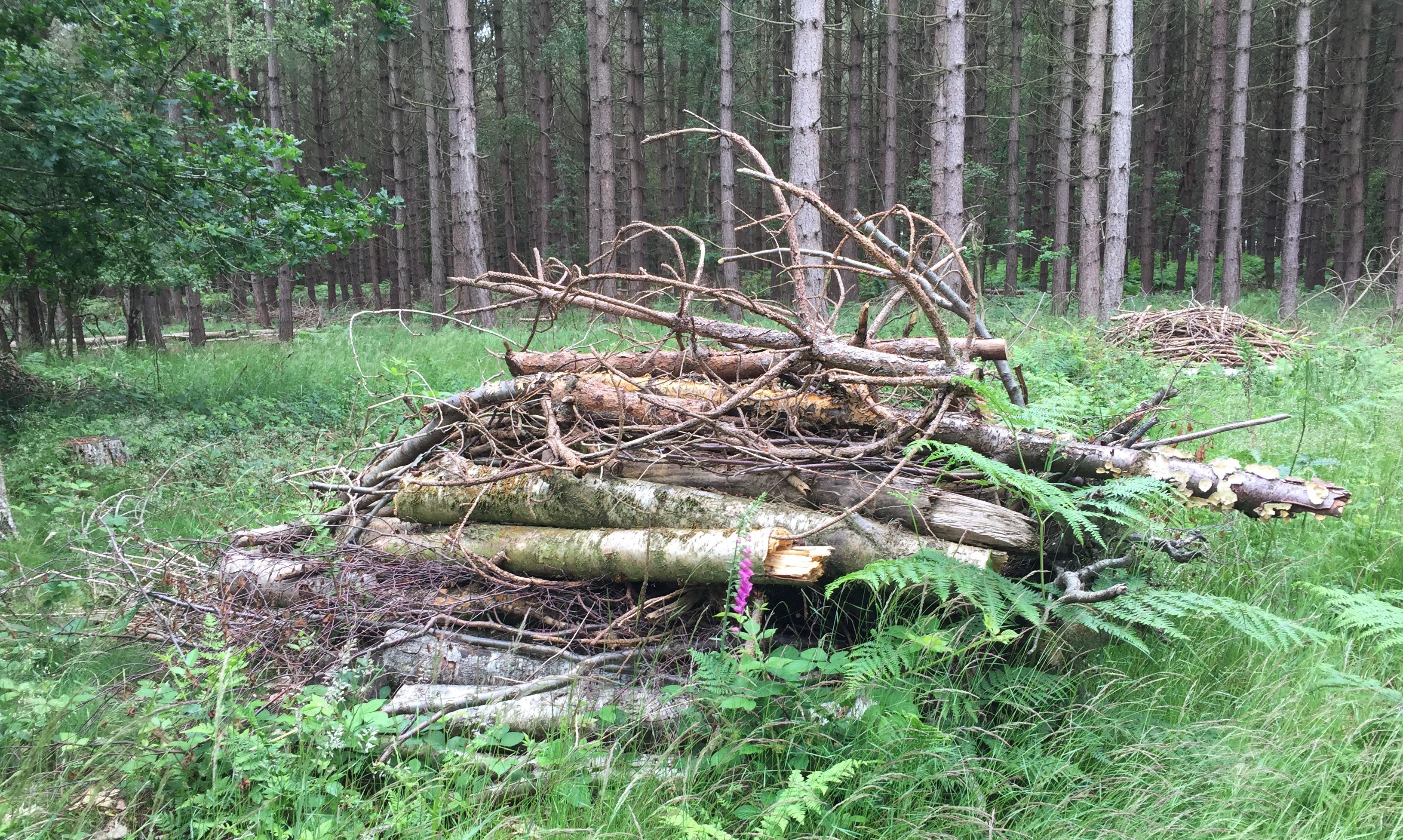
Are as simple as they sound! Stacks or piles are formed by laying branches and logs on top of one another. When trees need to be felled or fall in a dangerous way, they can be cut into sections and then piled together. Alternatively, trees which have come down, possibly due to the wind, can be left in-situ.
As mature and veteran trees age, retrenchment occurs starting with the upper parts of the tree dying back at the ends of the branches. This is a natural process which can lead to natural deadwood falling to the forest floor from the upper canopy.
Standing deadwood
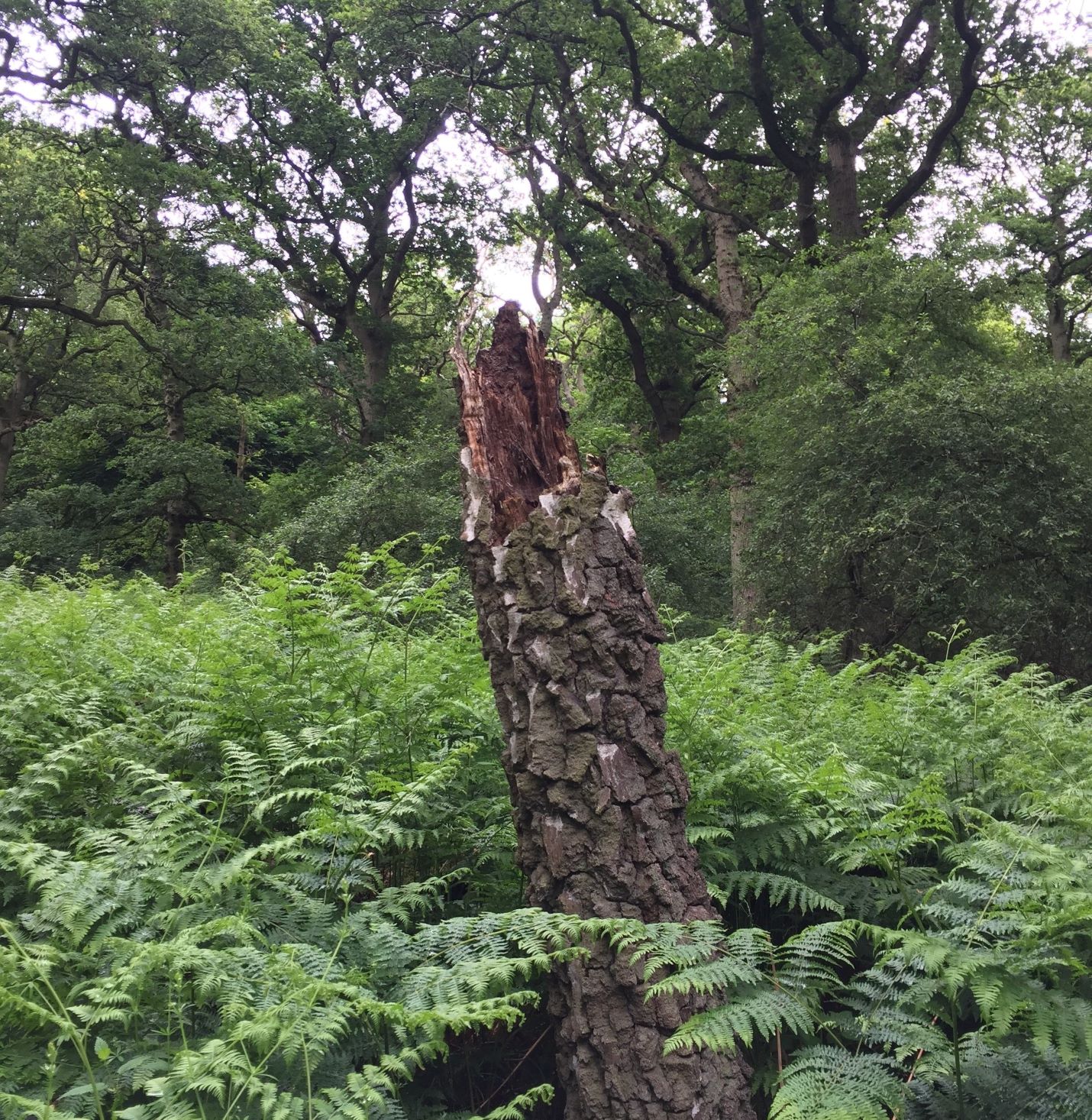
Standing deadwood can be seen throughout the forest in the form of veteran trees, stumps and standing dead trees (commonly known as a snag).
All forms of standing deadwood create invaluable habitat. Veteran trees provide a large variety of standing deadwood habitats. These include flaking bark and cervices utilised by bats, decaying heartwood/hollowing used by many species of invertebrate and holes made by birds exploited by other birds and small mammals.
Various types of fungi, lichens and moss can often be seen growing off both stumps and snags within the forest. When you next come across deadwood why not take a closer look and let us know what you find?
Wood debris within waterways
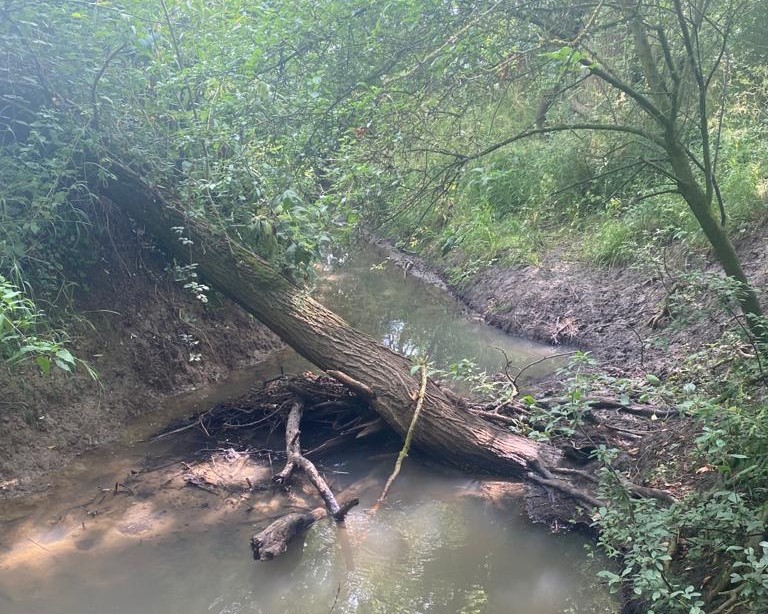
There are two types of woody debris found in our water ways: Large Woody Debris (LWD) and Coarse Woody Debris (CWD). Along stretches of the Noleham Brook and within ditches you are likely to see areas of CWD formed of smaller branches, twigs, and leaf litter. However, on occasion you may also come across LWD, which form when whole trees or large branches fall across waterways.
Though both types may look messy they in fact play a vital role within freshwater ecosystems. It is a myth that a “clean” forest is a healthy forest!
They are often hotspots of biological activity:
- Providing habitats for fish
- Supporting invertebrate life cycles
- Offering cover and perches for mammals, birds, invertebrates, amphibians, and reptiles
- Creating microhabitats by adding complexity to the waterway including the formation of pools, riffles, and chutes.
Not only is woody debris important for our wildlife, but it also helps to stabilise waterway banks and beds. Additionally, it improves water quality through the removal and oxygenation of fine silts, thus preventing gravel beds silting over.
Its place within the Forest
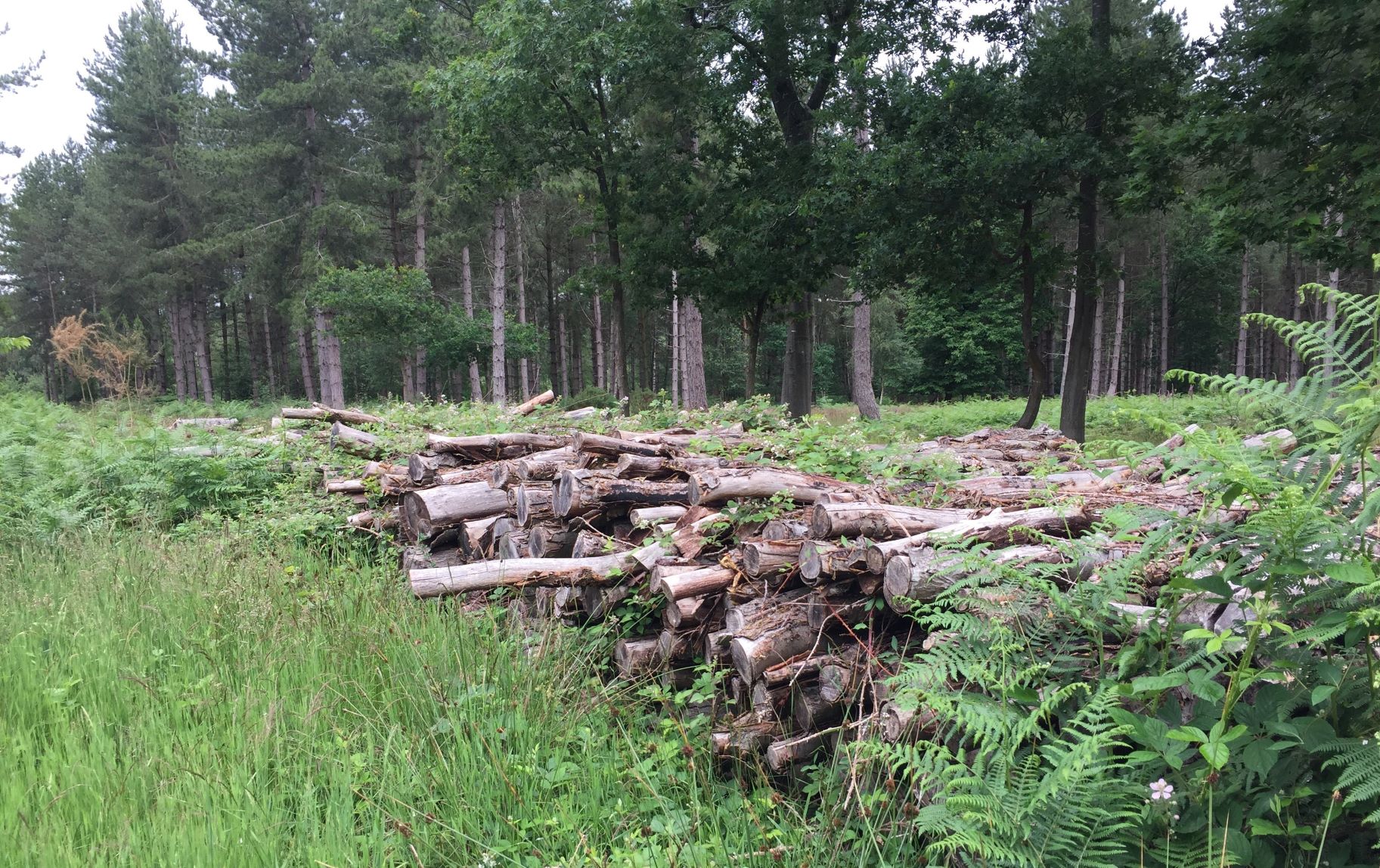
Deadwood is a crucial component of forest ecosystems. Not only does it play an essential role in sustaining biodiversity, but it also delivers important ecosystem services. Deadwood plays a key role in processes such as soil formation and nutrient cycling. As wood decomposes it returns important nutrients to the soil, supporting new growth. It also supports up to a fifth of woodland species, depending on dead or dying wood, to complete their life cycles. Many of these species are considered rare or threatened, such as the stag beetle.
Deadwood of all varieties supports a large and complex food chain which is driven by fungi. Did you know that around 2,000 of the UK’s invertebrates are saproxylic? This means that they are reliant on dead or decaying wood! But it is not just the mini-beasts that rely on deadwood. For example, hollow trees provide homes for birds and mammals, with many species of bat to be found roosting inside.
Management of deadwood habitats
So, how do we manage deadwood habitats in the Forest? Once deadwood is established it requires very little management as nature does the job for us.
Piles/ stacks, dead hedgerows and stumps can mostly be left to their own devices. Larger areas of deadwood such as veteran trees and snags require checks to ensure they are safe, and anything considered a possible danger is removed from that location. However, this is rarely necessary.
It is amazing to sit back and enjoy the nature deadwood provides and watch as it changes with the rate of decay.
Create your own at deadwood habitat at home
Interested in creating deadwood habitats at home? Then give these simple ideas a try:
- When pruning, pile up the removed vegetation along with some sticks and leaf litter
- Remove a ring of bark around a limb of a tree or shrub, creating standing deadwood
- Leave old tree/ shrub stumps in place
- Create a log pile by stacking branches and logs in a semi shaded corner of your garden. You could also drill holes into the log ends to create habitats for solitary bees.
Creating deadwood in your garden at home will encourage all sorts of wildlife. Alongside all the amazing invertebrates, you may be lucky to see hedgehogs, frogs, toads and even newts using your newly created microhabitat!



